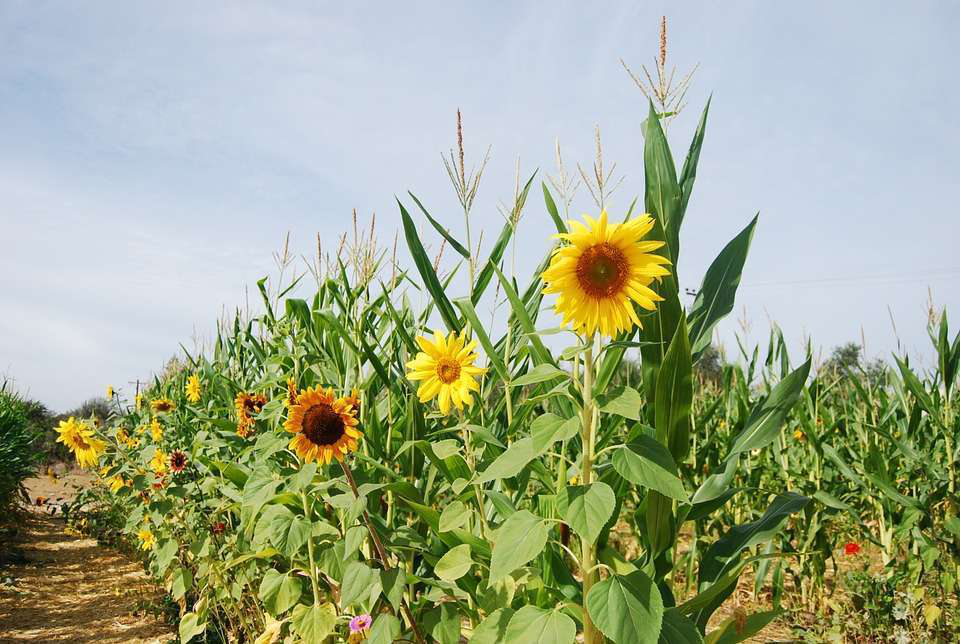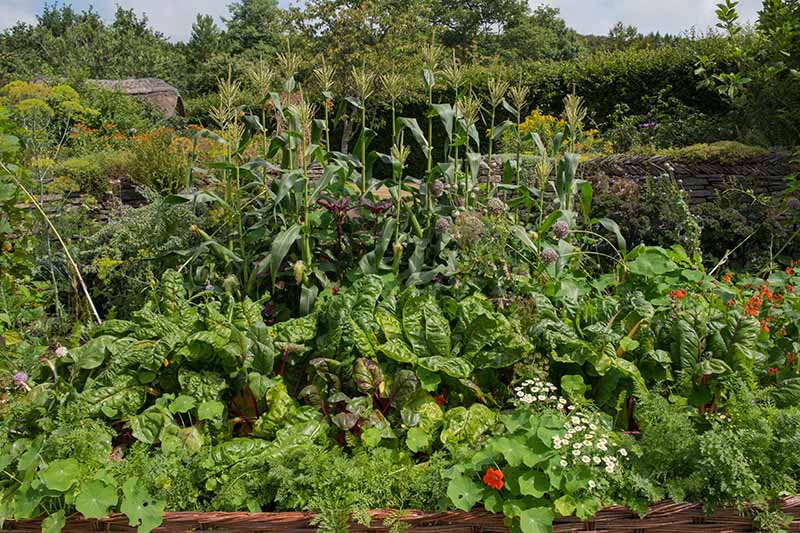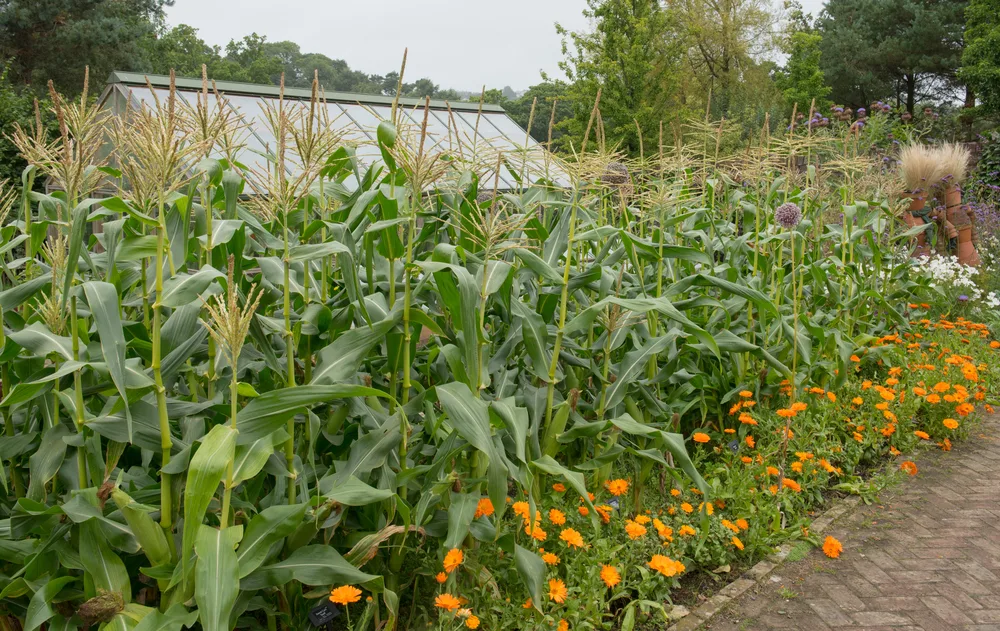The Ultimate Guide To Corn Planting Companions
The Ultimate Guide to Corn Planting Companions
Corn is a delicious and versatile vegetable that can be enjoyed in many different ways. But did you know that there are certain plants that can help corn grow better? Companion planting is the practice of planting different types of plants together to benefit each other. When done correctly, companion planting can help to improve crop yields, deter pests, and attract beneficial insects.
In this guide, we will discuss the best companion plants for corn. We will also cover some of the benefits of companion planting and how to choose the right companions for your garden.
Benefits of Companion Planting
There are many benefits to companion planting, including:
- Improved crop yields: Companion plants can help to improve crop yields by attracting beneficial insects, deterring pests, and providing nutrients to the soil.
- Deterrent to pests: Some companion plants can help to deter pests from attacking corn. For example, marigolds and nasturtiums are known to repel aphids, beetles, and other common corn pests.
- Attract beneficial insects: Companion plants can also attract beneficial insects, such as ladybugs and lacewings, which can help to control pests.
- Improved soil health: Some companion plants, such as legumes, can help to improve soil health by fixing nitrogen in the soil. This can benefit corn and other plants in the garden.
How to Choose Companion Plants for Corn
When choosing companion plants for corn, there are a few things to keep in mind:
- Plants with different growing habits: Choose plants that have different growing habits than corn. This will help to prevent competition for resources, such as sunlight, water, and nutrients.
- Plants with complementary nutrient needs: Choose plants that have complementary nutrient needs. This will help to ensure that the soil is well-balanced and that all of the plants in the garden are getting the nutrients they need.
- Plants that repel pests: Choose plants that repel pests that are common to corn. This will help to protect your corn crop from damage.
Some of the Best Companion Plants for Corn
Some of the best companion plants for corn include:
- Beans: Beans are a great companion plant for corn because they fix nitrogen in the soil. This benefits corn and other plants in the garden.
- Peas: Peas are another nitrogen-fixing plant that is a good companion for corn. They also help to suppress weeds.
- Marigolds: Marigolds are known to repel aphids, beetles, and other common corn pests. They also help to attract beneficial insects.
- Nasturtiums: Nasturtiums are another good insect repellent. They also help to improve soil drainage.
- Dill: Dill is a good companion plant for corn because it attracts beneficial insects, such as ladybugs and lacewings. It also helps to improve pollination.
- Sunflowers: Sunflowers are tall plants that can help to provide shade for corn. They also attract beneficial insects.
- Potatoes: Potatoes are a good companion plant for corn because they help to suppress weeds. They also benefit from the nitrogen that the corn fixes in the soil.
What Not to Plant Near Corn
There are a few plants that should not be planted near corn, including:
- Brassicas: Brassicas, such as broccoli, cabbage, and kale, should not be planted near corn because they compete for the same nutrients.
- Tomatoes: Tomatoes and corn attract similar pests, so it is best to plant them on opposite sides of the garden.
- Melon and Cucumber: Melons and cucumbers should not be planted near corn because they can spread powdery mildew to corn.
Conclusion
Companion planting is a great way to improve the health and productivity of your corn crop. By choosing the right companion plants, you can help to deter pests, attract beneficial insects, and improve soil health.
Corn is a versatile and delicious crop that can be grown in many different climates. But did you know that there are certain plants that can help corn grow even better? These are called "corn planting companions," and they can provide a number of benefits, such as:
- Attracting beneficial insects: Some plants, such as marigolds and nasturtiums, attract beneficial insects that help to control pests. This can help to keep your corn plants healthy and free of insect damage.
- Providing shade: Other plants, such as beans and peas, can provide shade for corn plants. This can help to protect the corn from the sun's harsh rays and keep the soil cool.
- Improving soil quality: Some plants, such as clover and alfalfa, can improve soil quality by adding nitrogen and other nutrients. This can help to make the soil more fertile and support the growth of healthy corn plants.
If you're interested in learning more about corn planting companions, I recommend visiting Garden Wiki. This website has a wealth of information about different companion plants and how they can benefit corn crops.
FAQ of corn planting companions
Q: What are the best companion plants for corn?
A: Some of the best companion plants for corn include:
- Pole beans: Pole beans fix nitrogen in the soil, which is beneficial to corn. They also provide shade for the corn roots, which helps to keep them cool and moist.
- Peas: Peas are another nitrogen-fixing plant that is a good companion for corn. They also help to suppress weeds.
- Dill: Dill attracts beneficial insects, such as ladybugs and parasitic wasps, which help to control pests that can damage corn. It also improves the flavor of corn.
- Marigolds: Marigolds repel pests, such as nematodes and corn earworms. They also attract pollinators, which help to pollinate the corn.
- Nasturtiums: Nasturtiums repel pests, such as aphids and whiteflies. They also help to attract pollinators.
Q: What plants should not be planted near corn?
A: Some plants that should not be planted near corn include:
- Brassicas: Brassicas, such as cabbage, broccoli, and kale, need full sun to thrive. Corn can shade them out, stunting their growth.
- Tomatoes: Tomatoes and corn attract similar pests, such as the tomato fruitworm or corn earworm. Planting them together can make it more difficult to control these pests.
- Potatoes: Potatoes and corn compete for nutrients. Planting them together can lead to nutrient deficiencies in both plants.
Q: Can I plant corn next to each other?
A: Yes, you can plant corn next to each other. However, it is important to plant different varieties of corn at least 20 feet apart. This will help to prevent cross-pollination, which can lead to misshapen or less flavorful corn.
Q: How do I plant corn with other companion plants?
A: When planting corn with other companion plants, it is important to consider the spacing requirements of each plant. Corn needs about 2 feet of space between plants, while pole beans and peas need about 3 feet of space. Dill, marigolds, and nasturtiums can be planted closer together, but they still need some space to grow.
Image of corn planting companions
- Pole beans: Pole beans are a great companion plant for corn because they can climb up the corn stalks, providing support and shade. They also help to improve the soil nitrogen levels.

- Sunflowers: Sunflowers are another great companion plant for corn because they help to attract beneficial insects, such as ladybugs and parasitic wasps. They also help to deter pests, such as Japanese beetles.

- Nasturtiums: Nasturtiums are a beautiful and edible flower that can be planted near corn to attract beneficial insects and deter pests. They also help to improve the soil drainage.

- Dill: Dill is a fragrant herb that can be planted near corn to attract beneficial insects, such as hoverflies and lacewings. It also helps to improve the flavor of corn.

- Marigolds: Marigolds are a brightly colored flower that can be planted near corn to deter pests, such as nematodes and corn earworms. They also help to improve the soil aeration.

Post a Comment for "The Ultimate Guide To Corn Planting Companions"